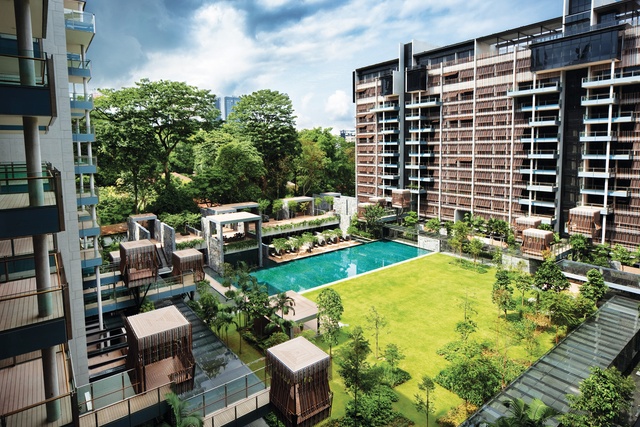
Housing developments play a major role in Singapore’s economic growth. With 7,500 inhabitants per square kilometre,1 Singapore is close to twenty times denser than Sydney.2 Today, around 82 percent of Singaporeans live in high-density public housing estates.3 Strong economic growth in the mid-1990s, spurred by the government’s support of private housing development, attracted foreign talent and fuelled a rapid increase in the number of private luxury residential developments. The scarcity of land, low tax benefits and an increasing demand for housing catapulted prices to an average of US$800 per square foot.4 In 2013, faced with a hot and highly speculative market and the danger of a real estate bubble, the government introduced measures to cool the market – increasing buyer’s stamp duty, raising the minimum cash down payment for second or subsequent loans to 25 percent and tightening loan-to-value limits on housing loans for second or subsequent properties.5
In December 2013, the Singapore economy recorded a 2.6 percent average rate of inflation.6 However, the housing market seems to have reached a plateau in its eleven-year cycle. The Urban Redevelopment Authority estimates another 95,000 private units will be on the market in the coming five years, which could cause the private vacancy rate to rise from 5.6 to 9.9 percent.7 The possibility of residential property market improvements in the next two years is rising, with a forecasted decrease in housing prices of between 5 and 15 percent. How, then, can architects design for this saturated market of premium condominiums?
via. ArchitectureAU Latest
